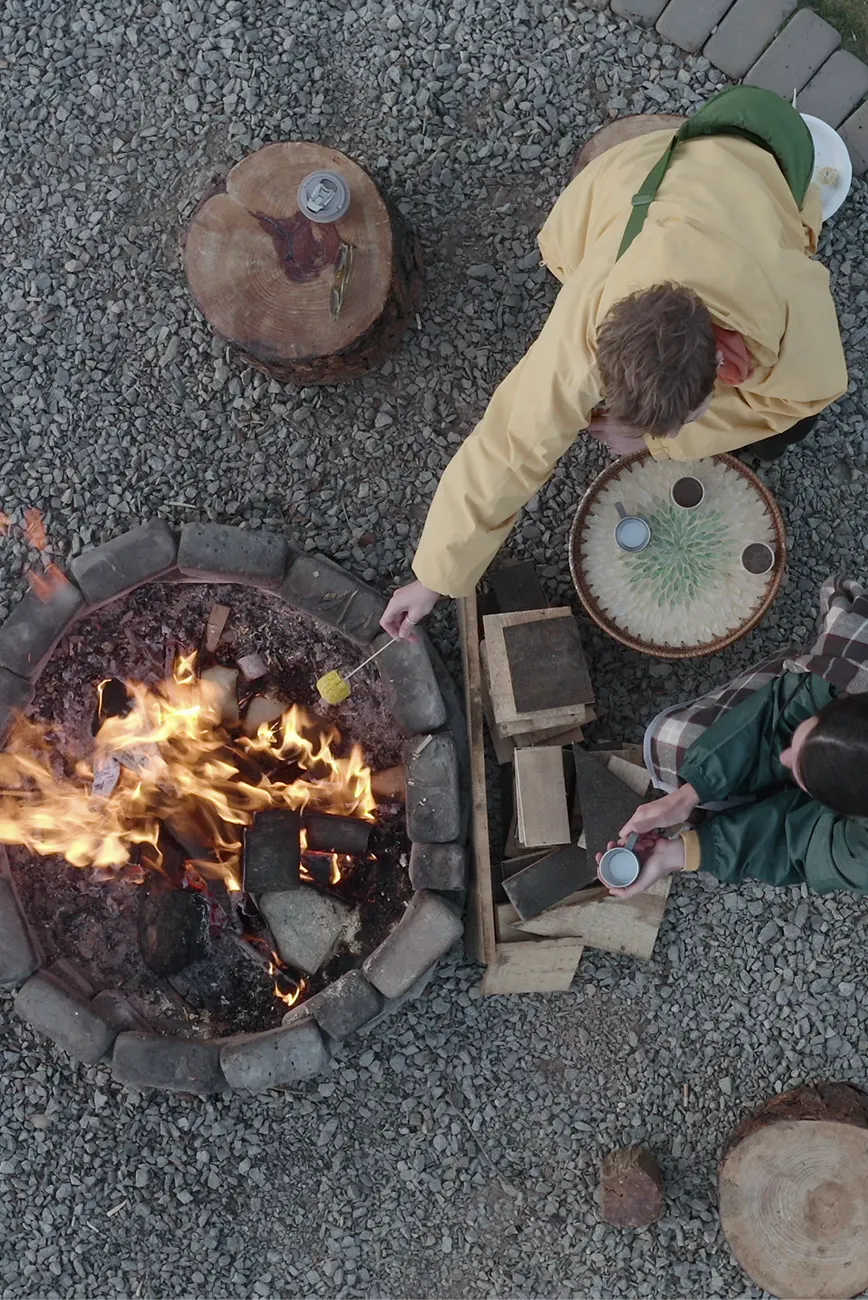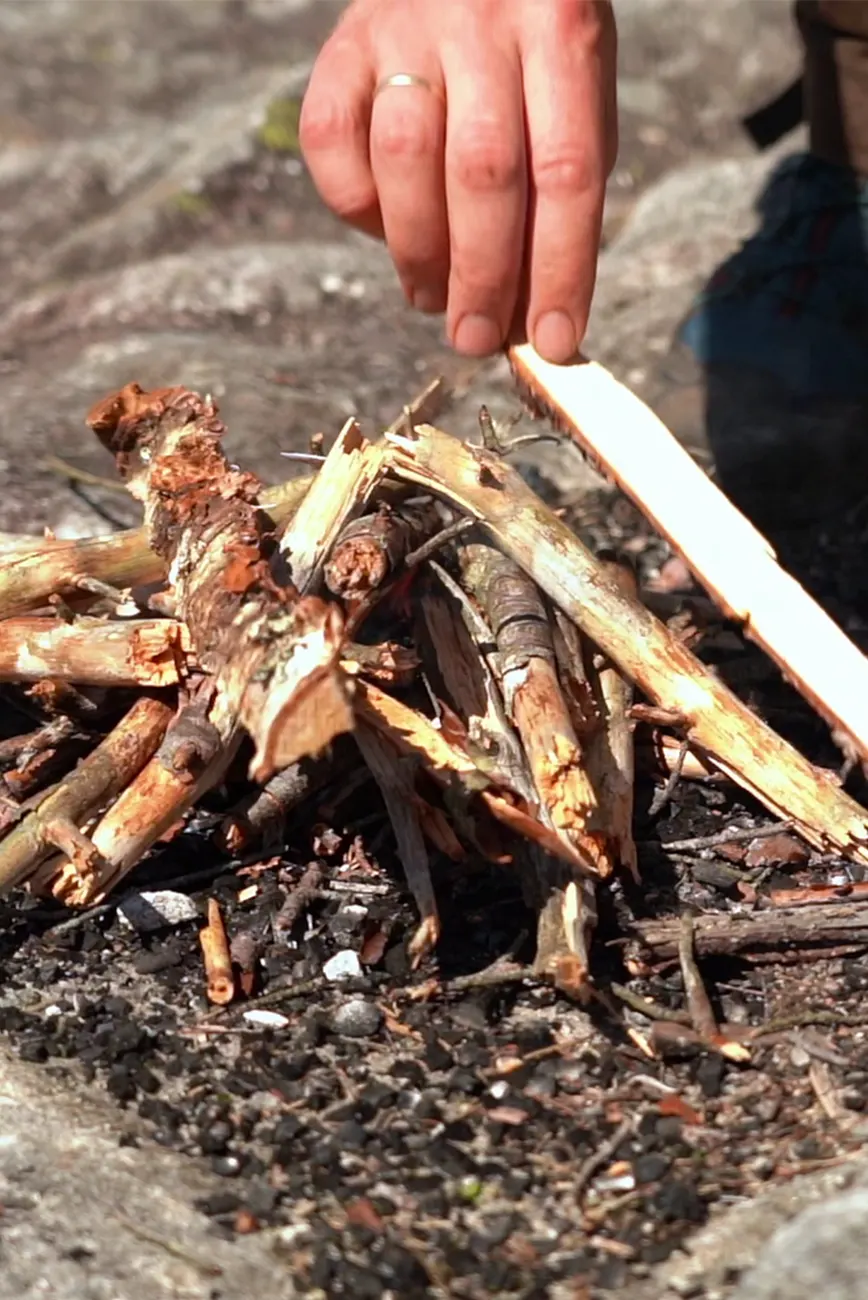A Complete Guide to Constructing a Campfire


Introduction
Immerse yourself in the enchantment of a mesmerizing campfire experience, where the flickering flames ignite laughter, stories, and marshmallow roasting. Constructing a campfire is an essential skill for every outdoor enthusiast, offering not only warmth but also a sense of togetherness and comfort. Whether you’re a novice camper or a seasoned explorer of the wilderness, this comprehensive guide will walk you through a step-by-step process to construct a campfire that ensures both safety and enjoyment amidst the great outdoors.
Table of Contents:
- The Cruciality of Fire Safety
- Selecting an Ideal Location
- Gathering Essential Materials
- Constructing a Basic Campfire
- Igniting the Campfire
- Campfire Etiquette and Maintenance
- Alternatives to Traditional Campfires
- Conclusion
1. The Cruciality of Fire Safety
Prioritizing safety is paramount when constructing a campfire. Familiarize yourself with the specific regulations and guidelines applicable to your camping area. Confirm the absence of fire bans or restrictions. Always monitor weather conditions and avoid fire-building during dry or windy periods. Essential safety precautions include carrying a fire extinguisher, locating a water source, and packing a first aid kit. Basic fire safety techniques, such as the Stop, Drop, and Roll method, should also be well understood. By adopting a proactive approach to risk assessment and implementing necessary safety measures, you can minimize the likelihood of accidents and experience a responsible campfire adventure.
2. Selecting an Ideal Location
Choosing the perfect location for your campfire ensures both safety and optimal enjoyment. Prioritize designated fire pits or established campfire areas, as these are designed to minimize risk and environmental damage. If these options are unavailable, identify open areas free from flammable materials such as trees, dry grass, or vegetation. Maintain a safe distance between the fire and camping gear, avoiding hazards. Adequate ventilation is crucial to prevent smoke disturbances for fellow campers. By showing respect for your surroundings and adhering to the principles of Leave No Trace, you can limit the impact on the environment.
3. Gathering Essential Material
A successful campfire starts with gathering the necessary materials. Ensure you have the following:
Tinder: Small, dry materials like twigs, leaves, or birch bark that readily catch fire.
Kindling: Slightly larger sticks, approximately finger-width, to sustain the fire.
Fuelwood: Logs or larger pieces of wood providing a steady fuel source.
Choose dry materials as wet wood can hinder ignition. Collect materials from the ground rather than damaging live vegetation, preserving the natural ecosystem. Carrying a small hand saw or hatchet can prove useful for cutting larger wood pieces, if required.
4. Constructing a Basic Campfire
Follow these step-by-step instructions to construct a basic campfire:
Clear the area: Remove debris, dry leaves, and grass to create a safe zone.
Establish a fire bed: Lay down rocks or a fire-resistant barrier (sand, gravel) to contain the fire and prevent spreading.
Arrange the tinder: Create a small pile of tinder in the center of the fire bed.
Shape a teepee structure: Surround the tinder with kindling, leaning the sticks against one another in a cone shape to allow airflow.
Integrate fuelwood: Position fuelwood around the kindling structure, ensuring it doesn’t collapse the teepee.
Create an opening: Form a small opening within the teepee structure to easily ignite the tinder.
Ignite the fire: Use matches, a lighter, or fire starters to ignite the tinder through the opening.
Gradually add more fuel: As the fire develops, add larger pieces of fuelwood, maintaining a balance between wood size and heat intensity.
Adjust airflow: To enhance combustion, gently blow on the base or reposition fuelwood if necessary.
5. Igniting the Campfire
Igniting a campfire can be challenging, particularly in adverse weather conditions. Consider the following tips to ignite your fire successfully:
Utilize fire starters: Pack fire starters like newspaper, dry pine needles, or commercial options to assist with tinder ignition.
Employ fire-lighting aids: Equip yourself with waterproof matches, windproof lighters, or magnesium fire starters to combat challenging conditions.
Leverage the teepee method: By constructing a teepee shape with the kindling and ensuring adequate airflow, you can ignite the tinder more effectively.
Exercise patience: Take your time and ensure that the fire is established before adding larger wood pieces.
6. Campfire Etiquette and Maintenance
To ensure a delightful campfire experience for all, adhere to proper campfire etiquette and responsibly maintain the fire:
Never leave unattended: Always supervise the campfire and never leave it unattended, even for a brief period.
Size matters: Avoid constructing large bonfires that may become challenging to control and cause harm.
Respect quiet hours: Comply with campground rules regarding noise levels and designated quiet hours.
Proper extinguishing: Before leaving the campsite or retiring for the night, fully extinguish the fire using water and ensure it is cool to the touch. Stir the ashes to uncover any remaining embers and douse them thoroughly.
Leave no trace: Clear the fire pit area, disposing of any residual ashes or debris appropriately. Leave the site as clean, or cleaner, than you found it.
7. Alternatives to Traditional Campfires
Certain circumstances may prohibit or discourage traditional campfire construction. Explore these alternatives for outdoor ambiance and warmth:
Camp stoves: Utilize portable camp stoves or grills, offering controlled heat sources for cooking and warmth.
Portable fire pits: Opt for portable fire pits specifically designed for outdoor use, minimizing ground damage while providing a contained fire experience.
LED flameless candles: Embrace a cozy atmosphere without a fire by using LED flameless candles that simulate the flickering glow of a campfire.
Conclusion
Mastering the art of constructing a campfire allows you to create lasting memories and forge a deep connection with nature. By prioritizing fire safety, selecting suitable locations, and diligently following the step-by-step instructions for constructing and maintaining a campfire, you can revel in the warmth, illumination, and enchantment of this timeless tradition while respecting the environment. Respectful campfire etiquette, responsible fire maintenance, and an appreciation for the moments spent amidst the crackling flames with loved ones ensure a safe and joyful camping experience. Embrace the adventure and relish the magic of a well-built campfire.
Check out our Instagram video below!
1 Minute How to start a camp fire!🔥 #campfire #outdoorcooking #campingtips #beginnersguide #hiking Learn how to start a campfire with this beginner’s guide. Our step-by-step tutorial shows you exactly what to do so you can start your own campfire safely. pic.twitter.com/cEaQD1L7ln
— Pro Tackle Australia (@ProtackleAust) May 29, 2023

